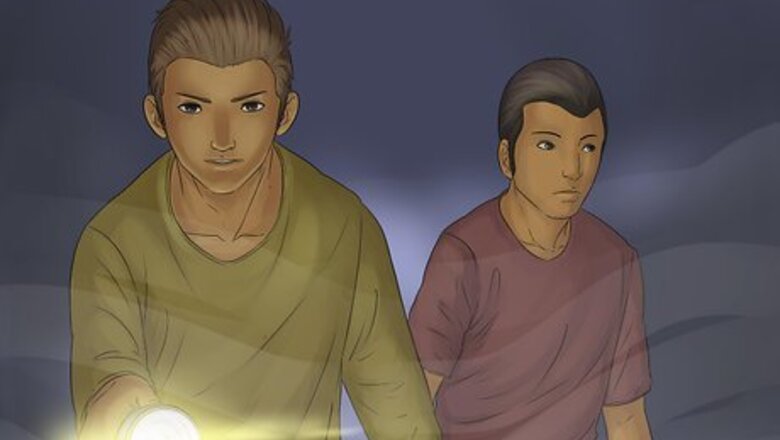
views
Checking out Different Sites
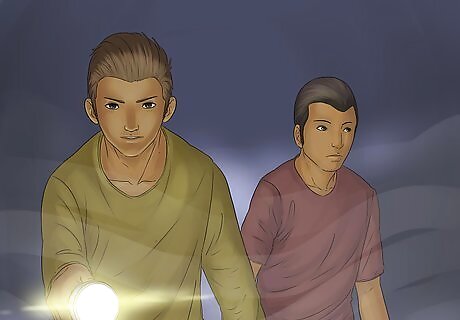
Take a friend with you. Never go on a ghost hunt alone as this can be scary and dangerous. Always bring a friend with you who's got your back whenever you need them to. Especially if you get easily spooked, having a friend with you will help you keep your cool. Make sure you take a friend who can calm you down if you get scared. Taking a friend who is very scared about supernatural things will only make your ghost hunt harder. Bring someone who believes in ghosts or supernatural activity and is not easily scared. When you visit a site, make sure both of you have your phone on. That way if one of you gets lost or separated from each other, you'll easily be able to find each other again.
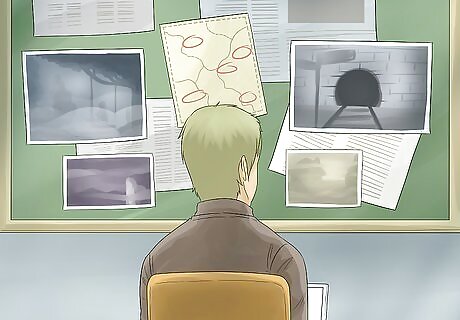
Figure out what sites you want to visit. Ghosts can be found at many different sites -- they don't have to be haunted. However, haunted houses or areas will probably grant you the best opportunity to find a ghost. Decide where you want to look for ghosts so that you can establish a game plan on when to visit those sites. The best way to find a ghost is by visiting a place where someone has already encountered a spirit. You can often find haunted houses or haunted areas by visiting a city's website. Some towns even have ghost tours, so visiting one of those may be a great opportunity to find a ghost. Think about areas where you or others have encountered paranormal activity. Have there been times you have seen objects moving on their own or sudden changes in temperature? If these events can't be explained scientifically, it may be a sign of paranormal activity. Some other common areas ghosts or spirits may haunt are hospitals, mental health facilities, old theaters/movie lots, battle grounds, orphanages, prisons, cemeteries, churches, and nursing homes. If you are located in New York, two places to visit with high EMF levels (electromagnetic field levels) are Algonquin Hotel and White Horse Tavern.
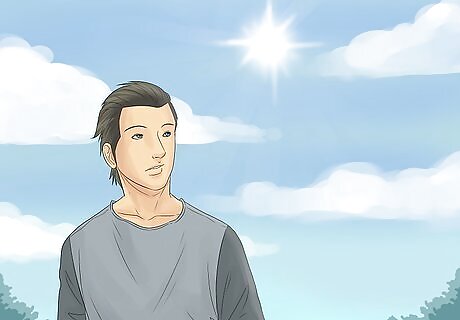
Visit your sites during the day. This is a wise step, because if you just go to your site at night, you won't be as familiar with your surroundings. Go to your locations during daylight so you can feel them out. Memorize where things are located and think about where a ghost may be hanging out. Then, when you go back at night you'll have a better sense of the place and won't risk getting lost or easily frightened. If one of your sites is private property, always contact the owner first before you just show up at their place. You may meet a frustrated owner or worse if you just show up. You want to get on their good side so that they are willing to show you around their property. Sometimes if a site is haunted by someone who died at the location, a good time to visit that site is on the anniversary of that person's death.
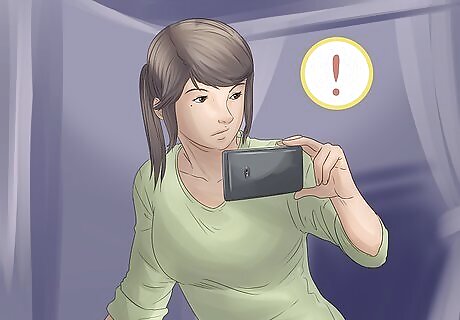
Record anything unusual you notice. Ghosts don't only haunt places at night -- sometimes the best times to haunt are when no one is expecting it. So, as you are visiting your sites, take notes about unusual things you have seen. If you visit a place and no unusual activity seems to be happening, you might cross it off your list. If your intuition tells you something strange is going on in a location, you might put it at the top of your list. You want to narrow down your list so you can really focus on the places that feel different. That way, you aren't spending hours investigating locations that have no paranormal activity. Taking notes while you research is a great way to keep track of all of your information.
Going on a Hunt
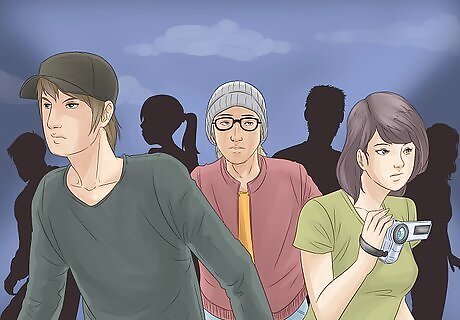
Gather a group if you can. As previously mentioned, always take a friend with you, but a group is even better. If you have three or more people looking for a ghost, the odds of finding one will increase. The more people you have, the more spread out you can be. Pick a leader of the group -- the person people can go to if they have spotted anything unusual. It's best to go out between 9 p.m. and 6 a.m., when it is dark. Try to visit one of the locations you went to earlier in which you sensed a presence or someone had already encountered a ghost. Ghost hunting is tricky and the odds of you finding a ghost are slim, but if you really want to see a ghost it's worth a try.
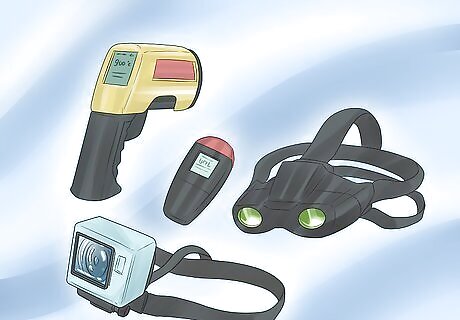
Pass out equipment. While you are ghost hunting, you'll want equipment to document your hunt. That way if you find a ghost, you can catch it on camera so people will know you weren't just imagining things. Have everyone in your group equipped with a digital camera and instruct them to keep it on at all times. A good camera to use is a GoPro or something you can attach to your body that you won't have to constantly hold. That way, if you get spooked you won't risk dropping the camera and losing footage. You can also bring a thermometer to watch for temperature changes, and an electromagnet field detector. This is the modern ghost hunter's tracking device, and helps them track energy sources by detecting fluctuation in electromagnetic fields. It's helpful to bring this tool when you are first visiting a site, so you can mark regularities. Then, when you actually go ghost hunting, you'll know when something changes. Before you go out, it could be good to say a prayer of protection. Ghosts are tricky beings, and you never know if you are going to encounter a peaceful or dangerous ghost. Try to calm the spirits in the house so you remain safe. Try to avoid using flashlights if you can. A ghost will likely hide if a bright light is thrown into a room. Use night goggles for the best vision. The more energy you bring to a ghost hunt, the better luck you will have at encountering a spirit. If you go with a group that feels very apathetic about the hunt, you probably won't see a ghost. Make sure you bring a group of people excited and eager to look for spirits.
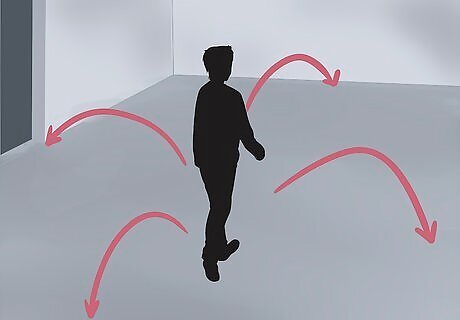
Spread out in the area. Now that you are equipped, it's time to go find a ghost. Using all of your knowledge you have gained so far, walk around your area looking for signs of paranormal activity. As mentioned earlier, pay attention for strange sounds, temperature changes, or even your intuition. If you feel a dark fog or a presence in a room, it may be a ghost that hasn't revealed itself to you yet. Wait patiently to see if the ghost will come out. If you make sudden movements or leave the room, the ghost may get spooked or you may loose your opportunity to see it. Make sure every room and every nook and cranny is visited. Ghosts can be anywhere so you don't want to ignore a space just because you doubt a ghost would be there. Watch the gauge on the EFM to see if there is a spirit or presence in the room. If there is something else in the room besides you, the gauge will make a sudden movement to the right. If the gauge remains on zero or to the left of the meter, there's probably nothing in the room.

Attempt to summon the ghost. There are different ways you can summon a ghost, and many ghosts will not come out just because you have summoned them. However, if you are in an area that someone has spotted a ghost already, or you feel it is haunted, you can try out these techniques: Ouija Board: Place this in the room you are in. Place your hand on the guider and allow the ghost and spirits in the room to guide you through the board so they can send you a message. Planchette: This heart shaped, flat piece of wood was used to produce mysterious messages that made people believe it helped them communicate with spirits. Bring it with you and place it in the room you are in. A medium: A medium is someone who has the ability to communicate with the dead. If you really want to find a ghost, bringing a medium with you on your ghost hunt is the best chance you have. They know specifically how to summon ghosts and will be able to communicate to the spirit for you. Communicate with the ghost: If all else fails, you can try to communicate with the ghost yourself. Using a gentle voice, simply ask the ghost to show themself. Tell the ghost you are there on peaceful terms.
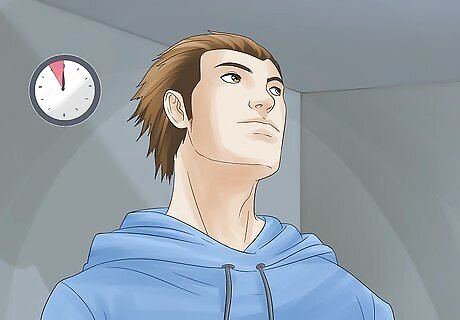
Spend an hour or so in the area. If you have a big group and are able to cover the area quickly, try to spend an hour in your area. If you are assigned two rooms, spend 30 minutes in each room, looking around. If you see no signs of a ghost, move on to another room. If you have a much larger area or a smaller group, give yourself enough time to explore each room efficiently. Use the notes you previously took to visit the areas that are more likely to have a ghost. Take notes in each area so that should you decide to visit it later, you'll know what to look for. When you are in a room, remain quiet. You want to respect the dead and the spirits, and this will give you more protection as well. Encourage your team to move quietly through the location, with no laughter or horse play. Actually seeing a ghost may be difficult, but you might be able to listen for a ghost. Take a tape recorder or your phone with to a site. Then, place it in a room on the floor or a table and start recording. Begin asking questions to the spirits in the room. After you've finished your hunt you can go back and listen to the recording, listening for any spirits that might have spoken through the white noise.
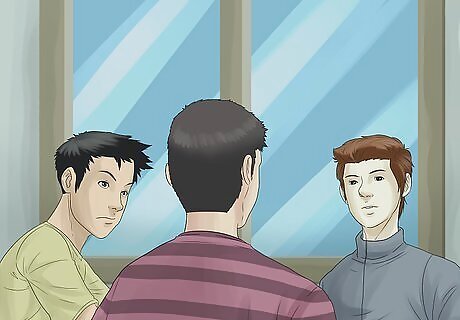
Gather back together. After everyone has spent a good amount of time in their assigned locations, come back together. Share any insights or findings you have, and compile all the information together into one document. If someone else saw a ghost and you want to see it, don't go as a large group. Go one by one in the area, giving yourself enough time to find the ghost. If no one saw a ghost during their time exploring, don't give up. Move onto another location and consider coming back to this location another time. If you visit the location one or two more times and don't see a ghost, then cross it off your list. There probably isn't a ghost or spirit there, or if there is, they aren't going to reveal themselves. You may want to look over the footage you took while you were in rooms. Your camera and audio may have been able to catch things you weren't yourself. Together you can watch each piece of footage to see if there was a presence in the room you didn't detect yourself. If you experience negative energy in a house and feel your lives are in danger, get out! Risking your safety is not worth it just to see a ghost. If a ghost feels disturbed they may not respond well to your presence.
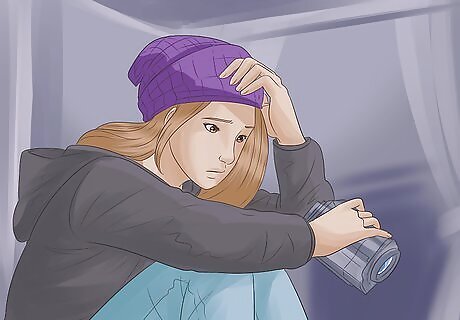
Don't be discouraged if you don't find a ghost. Many people who encounter ghosts usually experience them through sounds and mysterious hazes. People don't often see a ghost in complete form, so have realistic expectations when entering a location. You're more likely to experience the spirit through noises, temperature changes, and hazes or through things that appear on your video or audio after you have left the location. If they do see a ghost in its complete form, it's usually by mishap -- someone was just walking around doing their own thing and they noticed a ghost. A ghost is more likely to appear this way, because they don't always like to be summoned and disturbed.
Learning About Ghost Hunting

Read a ghost hunting book. Before you begin your ghost hunt to search out a ghost, consider reading a book or two about ghost hunting. A book may provide valuable information about how to locate a ghost, where to find a ghost, and what to do when you an encounter a ghost. Searching for a ghost as an amateur may be a dangerous task, so do some research before you go at it yourself. Some books to pick up when you are learning about ghost hunting are: The Ghost Hunter's Survival Guide by Michelle Belanger - Protection Techniques for Encounters with the Paranormal; Paranormal Technology: Understanding the Science of Ghost Hunting by David M. Rountree; Hauntings and Poltergeists: Multidisciplinary Perspectives edited by James Houran & Rense Lange; Ghosts, Apparitions & Poltergeists - An Exploration of the Supernatural Through History by Brian Right; and Ghost Hunter's Guidebook by Troy Taylor.
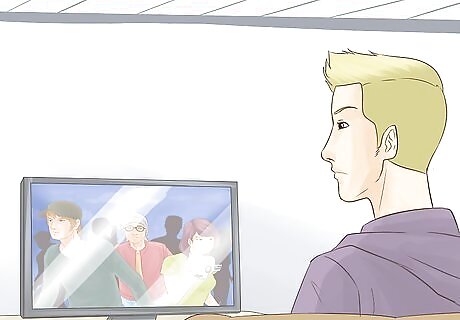
Watch ghost hunting documentaries. Documentaries, which are real life events, can be a great place to start when you are learning about finding a ghost. The documentaries often feature professionals, which will key you into tips and tricks on how to find ghosts. Some good documentaries to watch before you go exploring are Ghost Adventures (2004), Enfield Poltergeist, Ghost Hunters, The Dead Files, A Paranormal witness, and Celebrity Ghost Stories.
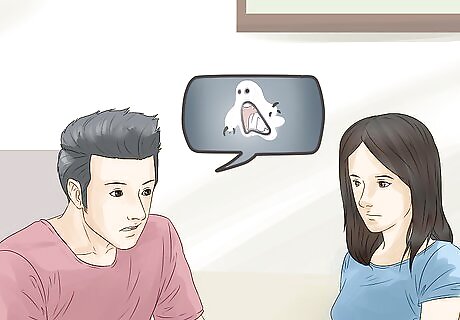
Talk to others who have encountered ghosts. People with experiences are often the best sources to turn to when you are trying to find a ghost. Ask them where they saw the ghost, when they saw it, and what the ghost looked like. Learning from someone who has personal experience may help you better equip yourself to find a ghost. If you don't personally know someone who has seen a ghost, look up the history of your town to learn about different supernatural encounters. You are bound to encounter a story of a house or location where someone thought they saw a ghost. If you can't find any in your town, you will probably have some luck in finding a story in a city close to yours. You can also visit internet boards about ghost hunting or ghost encounters to get advice from people. These sites are good places to chat with people about their experiences or to connect with someone who also wants to go on a ghost hunting pursuit.

Take everything with a grain of salt. Many people believe ghosts don't exist, and some people will create paranormal activity just to try to convince others ghosts are real. When you are doing research or even ghost hunting, try to stay realistic. Don't convince yourself you saw something paranormal just because the wind blew a little harder than usual. Look for very clear signs of ghosts -- not just your own imagination. Some clear signs you can look for are actual people, or movements of objects that aren't affected by the current weather or atmosphere. Sounds that are strange and unusual (not just the wind moving through the trees) may also be good things to pay attention to. You can also listen for voices coming from the walls and cracks of buildings that aren't caused by the people around you. Pets acting strange or dogs barking at the air may be a sign of something supernatural.
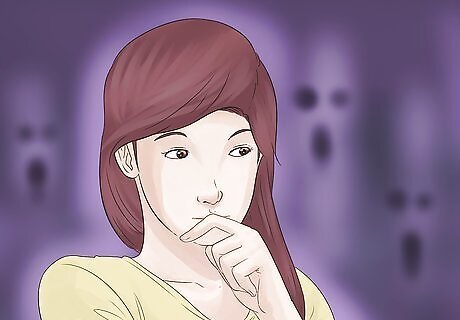
Know that ghosts and spirits are often imagined. Someone who is suffering from isolation or has been in a situation where they are experiencing high levels of stress often imagine ghosts around them. These ghosts or spirits usually help comfort them and guide them so that they can overcome their current situation. Keep in mind that many people you talk to may be experiencing these situations, but aren't actually seeing real ghosts. These imaginings often come from someone's hallucination and occur from the changes in brain chemistry due to stress, lack of oxygen, monotonous stimulation, or a buildup of hormones.
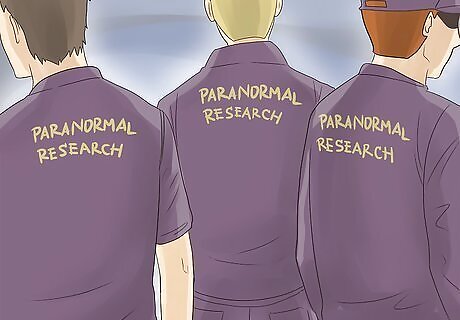
Volunteer to work with a paranormal research group. These are located all throughout the U.S. and will often help guide you to the most local paranormal organization. Volunteering with an organization like this will help train you and give you a team of people that can help in your pursuit of ghosts. One site to check out is the Online Paranormal Society Directory. It can help lead you to nearby societies or companies and has almost 3,000 listed in the U.S.












Comments
0 comment